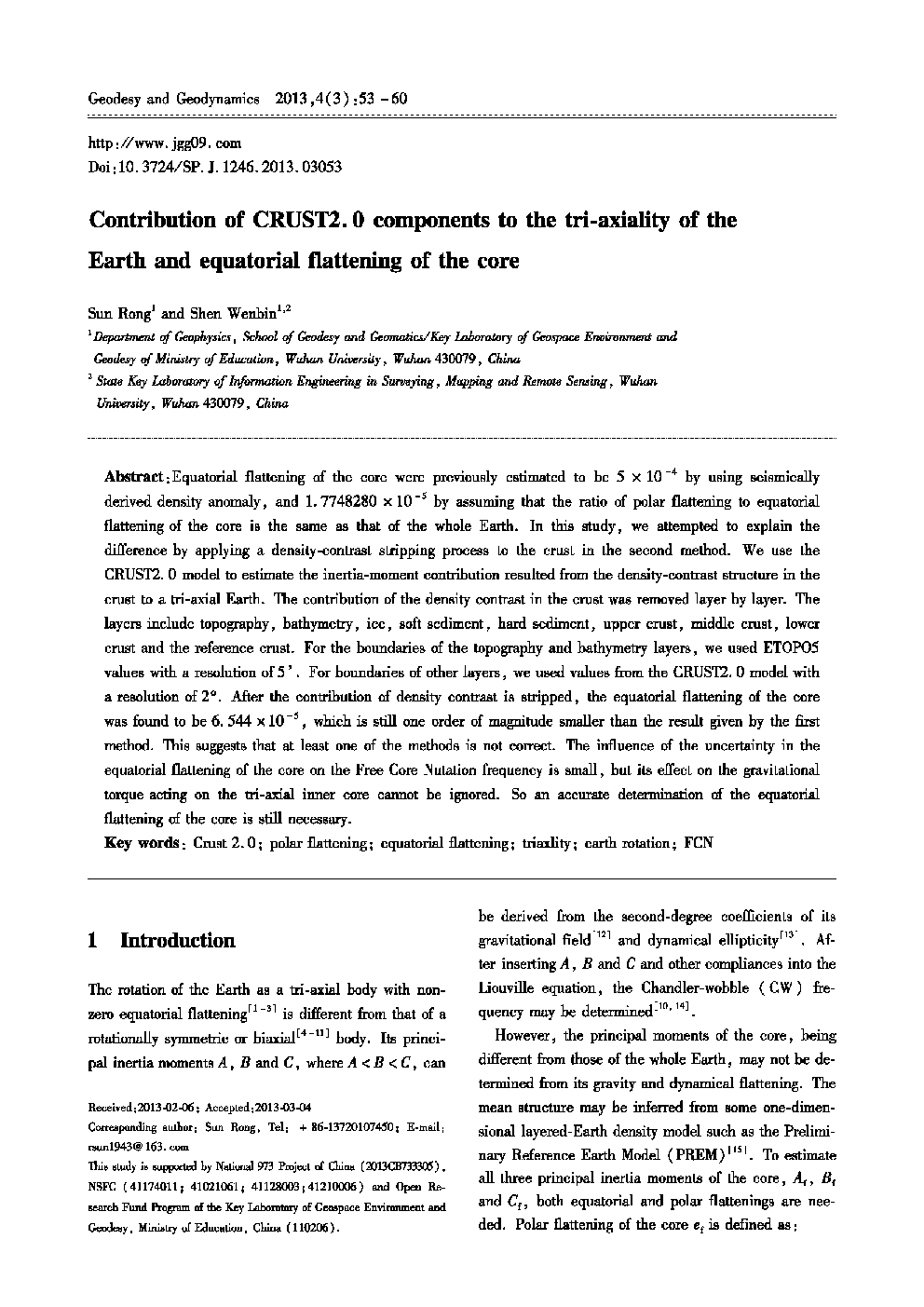| Article ID | Journal | Published Year | Pages | File Type |
|---|---|---|---|---|
| 4683733 | Geodesy and Geodynamics | 2013 | 8 Pages |
:Equatorial flattening of the core were previously estimated to be 5 × 10− 4 by using seismically derived density anomaly, and 1.7748280 × 10− 5 by assuming that the ratio of polar flattening to equatorial flattening of the core is the same as that of the whole Earth. In this study, we attempted to explain the difference by applying a density-contrast stripping process to the crust in the second method. We use the CRUST2.0 model to estimate the inertia-moment contribution resulted from the density-contrast structure in the crust to a tri-axial Earth. The contribution of the density contrast in the crust was removed layer by layer. The layers include topography, bathymetry, ice, soft sediment, hard sediment, upper crust, middle crust, lower crust and the reference crust. For the boundaries of the topography and bathymetry layers, we used ETOPO5 values with a resolution of 5'. For boundaries of other layers, we used values from the CRUST2.0 model with a resolution of 2°. After the contribution of density contrast is stripped, the equatorial flattening of the core was found to be 6.544 × 10− 5, which is still one order of magnitude smaller than the result given by the first method. This suggests that at least one of the methods is not correct. The influence of the uncertainty in the equatorial flattening of the core on the Free Core Nutation frequency is small, but its effect on the gravitational torque acting on the tri-axial inner core cannot be ignored. So an accurate determination of the equatorial flattening of the core is still necessary.
